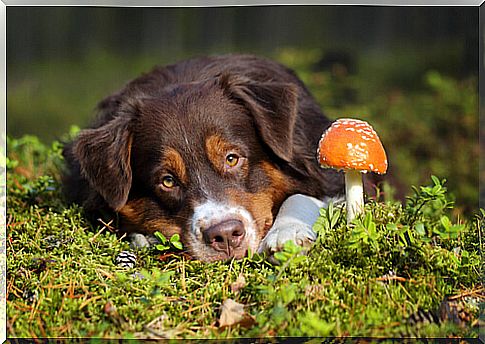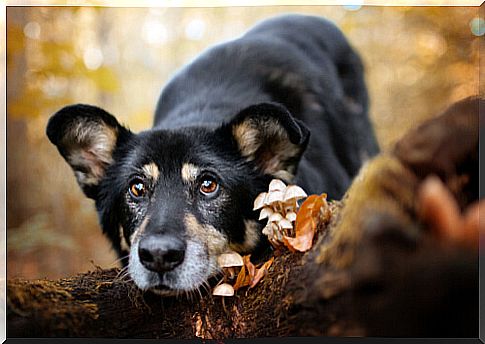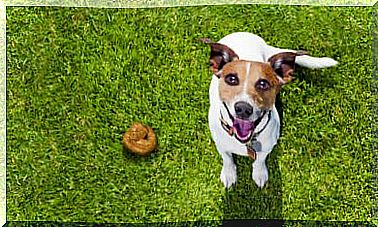Fungal Poisoning In Dogs: What To Do?

Mushroom poisoning in dogs can occur both in a rural environment and in the home environment itself. Therefore, it is essential that owners ensure that their pets are properly fed.
The term mycotoxicosis refers to the set of diseases produced by mycotoxins, present in the fungus itself or in another surface, substance or food that has been contaminated.
Bread or fruits are two of the products with the greatest tendency to deteriorate, but feed and, above all, wet dog food are also susceptible to spoiling.
Regarding the direct intake of mushrooms in dogs, extreme caution should be exercised. While some of the specimens in the field are harmless or cause minor gastrointestinal disturbances, others can be fatal.
Symptoms of mushroom poisoning in dogs
The symptoms and severity of mycotoxicosis will depend on the species and the amount of toxins ingested. However, there are a number of general indicators that can make you suspect a possible poisoning:
- Muscle tremors, incoordination and seizures.
- Panting and increased heart and respiratory rates.
- Weakness, dehydration, loss of appetite, and vomiting.
- Fever.
In a more specific framework, toxic fungi can be classified into five categories based on the clinical signs caused. They are listed below in increasing order of severity:
- Mushrooms that cause gastrointestinal disorders. They belong to the genera Agaricus , Boletus , Entoloma , Lactarius , Scleroderma and Tricholoma . Vomiting, abdominal pain and diarrhea usually appear within two hours of being ingested, and disappear spontaneously within two days.

- Hallucinogenic mushrooms. The genera Psilocybe , Panaeolus , Conocybe and Gymnopilus stand out . They affect the central nervous system by stimulating serotonin receptors. Although symptoms usually last less than 48 hours, seizures can occur or even be fatal.
- Mushrooms that cause muscarinic reactions . The genera Inocybe and Clitocybe stand out . Lacrimation, salivation, vomiting and diarrhea are the most frequent symptoms ; these can last several days.
- Psychotropic mushrooms. The Amanita muscaria and the Amanita pantherina stand out . They alter coordination, breathing, and can lead to seizures or even death. These reactions will appear between 30 and 90 minutes after ingestion.
- Fungi that cause liver necrosis. They include the Amanita phalloides and the genera Galerina and Lepiota . The first symptoms are gastrointestinal to end in critical prognosis liver failure. Although these take between 6 and 24 hours to appear, it is advisable to go immediately to the vet.
Treatment and prevention
Mushroom poisoning in dogs should always be cared for by a specialist. Although the first symptoms are merely gastrointestinal, they can get complicated in a few hours. In addition, although the ingested mushroom is not highly toxic, it can cause great damage if it has been ingested in large quantities.

The induction of vomiting, the stomach lavages or the administration of activated charcoal are some of the most frequent maneuvers that aim to expel toxins.
In the case of liver failure, seizures or alterations in the heart or respiratory rate, the first action will be to recover normal vital signs.
As for home treatment, the veterinarian may prescribe a medication accompanied by a diet and moderate rest. The 48 hours following fungal poisoning in dogs are decisive, so the animal will have to be continuously cared for.
Preventing these poisonings is not always feasible. Even so, it is advisable to exercise extreme caution in rural outings and even in the parks and gardens themselves when the autumn humidity begins to be perceived.









